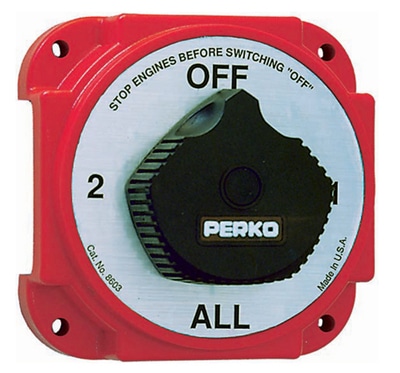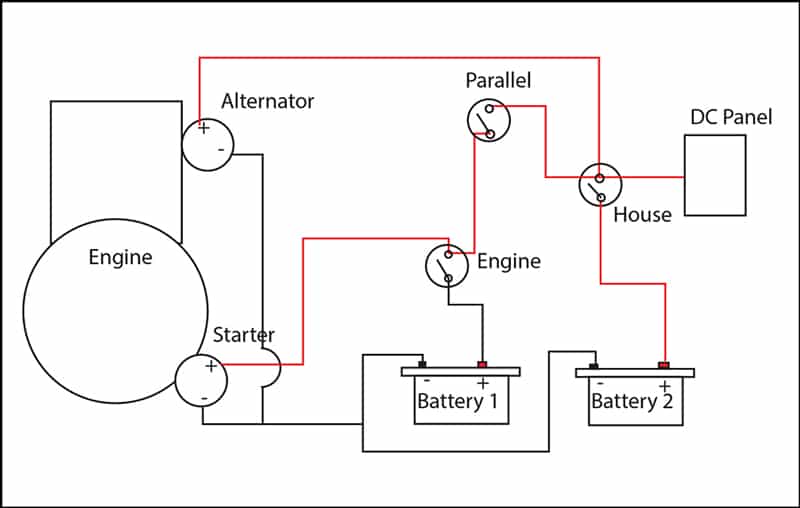
This article is an excerpt from NauticEd’s online Skipper Large Keelboats Course, a comprehensive online sailing course for beginner to intermediate sailors to learn how to sail large sailboats 26 ft (8m) and above. The Skipper Large Keelboats course is part of the Skipper Course Bundle of online courses, also teaching you how to master maneuvering under power and docking!
You can learn to sail and improve your sailing with NauticEd, the international leader in sailing education.
Sailboat Engine and House Systems
Perhaps the most important use of DC power on a vessel is for starting the engine. Considerable power is needed for this task and if the engine does not start immediately, you will drain even more energy from the battery.
Thus, it is prudent to always assign one “isolated” battery or bank of batteries for the sole purpose of starting the engine and assign another battery or bank of batteries to “the house”. “The house” is all the other systems and creature comfort devices such as the stereo and refrigerator needing electrons for themselves. In this manner, you always have enough battery power to start the engine even after running the stereo, refrigerator, lights, windlass, and all the other energy-sucking devices all day and night.
A variety of switches are available for this purpose. One of the most common has four positions:
- Off
- Battery 1
- Battery 2
- Both

Battery Switches
The system is usually cleverly set up so that once the engine is started, both the engine battery and house battery systems are automatically charged.
This allows flexibility in distributing your DC battery power. Often Battery 1 is designated as the battery for starting the engine and Battery 2 for all other purposes (house). The occasion for using “Both” occurs if the engine does not start immediately from Battery 1. By using both battery banks, you may be able to get the engine started.
In the event of an electrical fire, you should immediately turn the battery switches to the off position as quickly as possible.

Electrical Diagram
You can learn more in the Skipper Course....
Knowledge and theory for longer distances and overnight sailing in diverse conditions. The Skipper Course is a comprehensive online sailing course for beginner to intermediate sailors wanting to learn how to sail larger sailboats 26ft to 56ft. Or upgrade to the Skipper Course Bundle of online courses to also master maneuvering under power and docking!
